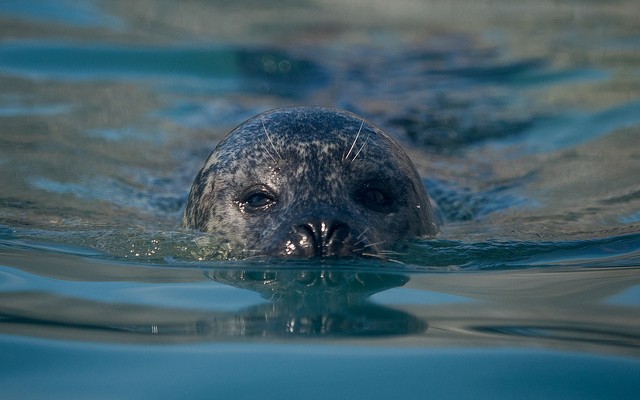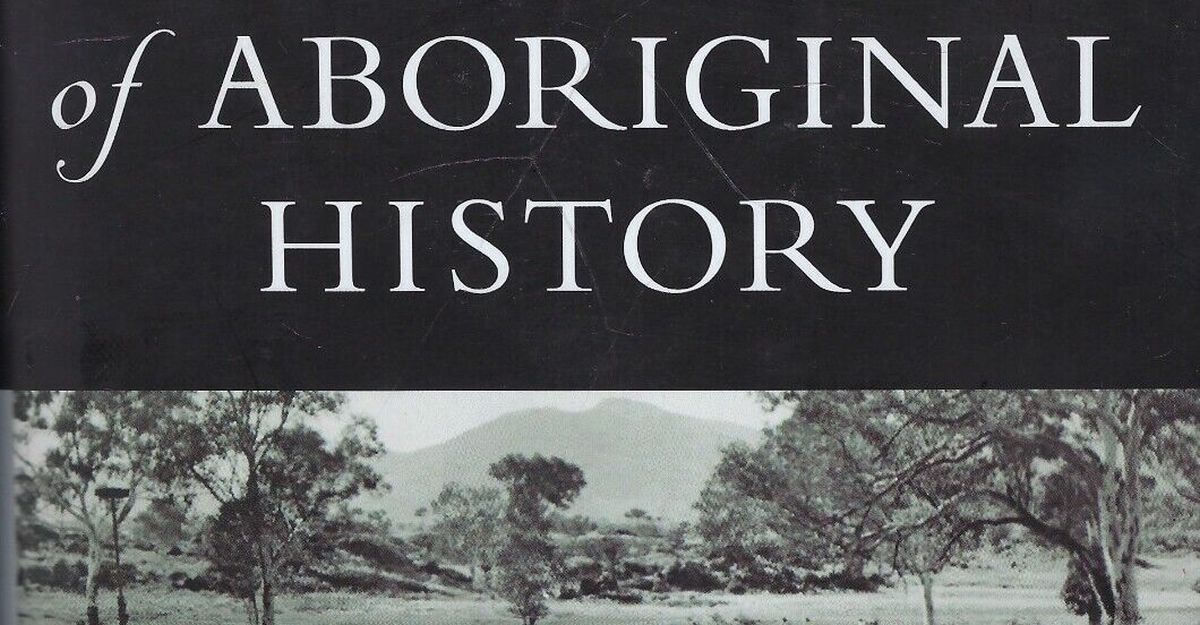My shoulders lurch back and an involuntary murmur slips through my lips; almost primal, it’s the thrill evoked by animals on display. The small child next to me inches closer to his mother, words whistling out between the gap in his teeth: ‘what is he doing?’
Grease-black, the Californian sea lion moves through the pool like a slick of oil pushed by a strong current. Propelled by rear flippers in a momentous leap, a halo of water spins from its glossy head, and, as the awkward mound flops down, a large splash rises to an elated chorus of laughter. A cool bead hits my arm.
The smell in the air is cold fish mixed with the scent left in a room after a dog has been bathed. I sit in the second row of the open-air auditorium as a rotund mammal parades before me, snapping at silver herring that sail through the air before disappearing into its cave-dark throat. A few days ago, staring at the vale to Beverley Farmer on my computer screen, I decided that this is how I would farewell the seal woman.
Beverley Farmer recently passed away at the age of seventy-seven, leaving behind an impressive, albeit somewhat overlooked, collection of writing. In 2008 she received the Patrick White award – an annual literary prize given to writers who have been active over a long period, but have not received adequate recognition. She joined a distinguished list of recipients including Christina Stead, Elizabeth Harrower, Tony Birch, Gerald Murnane and Thomas Shapcott. In her three novels, five short story collections, and other works of nonfiction, Beverley Farmer had the ability to weave stunning imagery from rich observations of people and nature, stitching together snippets of myth, fable, spirituality, poetry and science to create liminal spaces of transformation, where the in-between held equal importance to the final form.
Coastal landscapes are a reoccurring setting in Farmer’s work. It is in these littoral zones that the metaphor of the liminal extends geographically, temporally and ontologically.
‘All manner of curiosities wash up on this border,’ she wrote in 2017. Over her career Farmer explored the diffusion between artistic mediums, landscapes, species, states of being, life and death – not exclusively, but as intermingling concerns in a rich and complex ecology. Just days after her passing, I read the final pages of The Seal Woman (1992) in which Danish woman Dagmar attempts to come to terms with the loss of her husband in a small seaside town in the Otway region of Victoria. In this novel, seals become emblems for the fluid boundaries between worlds, traversing the limits between land and sea, and acting as guides to navigate through the process of mourning.
At the front of the 900-seat arena, the spritely attendant signals, and the seal waves its left limb on cue:
‘Believe it or not, we all actually have something in common … have a look at your hands. Now look at the front flipper. These seals have exactly the same bone structure in their flippers as we do in our hands.’
I stare down at my slender fingers, and back at the seal’s bones sheathed in a velvety glove. I am reminded of Julio Cortazar’s story about a man who travelled to the zoo every day to stare into the aquarium, only to recognise himself in the ‘little pink Aztec faces’ of the immobile axolotl huddled on the moss and stone at the bottom of the tank.
The anthropomorphic features of a monkey reveal the reverse of what most people believe, the distance that is travelled from them to us. The absolute lack of similarity between axolotls and human beings proved to me that my recognition was valid, that I was not propping myself up with easy analogies …
Between the seal and me, I feel these bones are an easy analogy. The cold face of Cortazar presses up against the glass tank of my mind; I feel the golden orbs of his axolotl eyes flaring as I look into the seal’s dark stones. An ocular tunnel extends from bright light into an abyss, not so much black, but a deep emerald green; inlets separated from the ocean by walls of limestone. The Danish woman plunges into one of the ice-cold pools.
Early on in The Seal Woman we learn of Dagmar’s fascination with the silkie (selkie), a mythological creature that shifts forms between seal and woman. Silkie mythology is rich in the text as Dagmar becomes infatuated with the seals that inhabit the coastal islands near the village where she is staying. It is when she is going through some old books in the sleep-out that she comes across the story of The Seal Woman:
A fisherman as he walks among the seals on the rocks at sunset one day finds a woman with her sealskin off and he steals it and will not let her have it back. She has to go with him and live in his cottage as his wife, until one day she finds her skin and goes back under the sea. But he gets hold of a skin. He follows her down and brings her back. And yet one day not long after, she finds her skin again and this time he drowns trying to follow her into the sea, the otherworld under the sea which is death.
The silkie, with its ability to shed its skin and move between worlds, represents ‘all the shed skins we wear in dreams,’ writes Farmer – the promise that no state of being is concrete. Dagmar and her lover Martin listen to Joan Baez’s harrowing voice recount the silkie tale and are left dwelling on the transition between life and death, and what is left behind.
In her last collection, This Water: Five Tales, Farmer returned to the image of the seal in her short story ‘Ring of Gold’. Again, a woman living in a seaside town is mourning her husband, and upon walking along the beach one morning, meets a bull seal uncharacteristically perched on the rocks: ‘before her eyes is the salmon-red gullet of the seal bared in a mute, mutual scream of horrified recognition’. The woman recounts how her husband passed away in the night and she lay by his side until morning in vigil, coming to the conclusion that if the dead were ever to walk in the light of day, they would take the form of water, ‘a formless flow, all shadow and shimmering transparency’. Watching on as the seal moves over the rocks and out towards the horizon, the woman too enters the otherworld under the sea.
Writers often imagine worlds so vivid they come to life, but it is a refined ability to transcribe nature without diminishing or elongating the distance between it and us. I have enjoyed this ability to celebrate the nomadic nature of becoming between two things in the works of the great South American writers like Julio Cortazar, Jorge Luis Borges and Clarice Lispector. Among Australian authors, Farmer embodied this ability in a rare way, and it was one of her finest gifts to readers. On closing The Seal Woman, I was left with an odd desire for proximity. As protagonist Dagmar stood before the splayed corpse of a seal, I wanted to see those splinters of brindled fur thinning out as they rose along the seals limbs, its bare flippers gleaming like oiled wood; to smell the sour odour of fish wafting from its wide open mouth.
While I might not have experienced a connection as rich as those in Farmer’s texts, sitting in a hard plastic chair watching as seals performed contemporary dance to slow ballads, I am reminded of the diffuse boundary between myself and those beings that extends beyond the bones in my hands. In the worlds Beverley Farmer created, experiences are shared, all origins are one, and all fates connected across oceans and countries; causality ripples out in currents that reaches the shores of far-flung lands. Farmer’s fictive world was one ‘sealed tight in its skin of air’, one where ‘all life on earth is spun out of it only to end up back where it belongs.’
I applaud the cast of the show, both animal and human, as the seals waddle to the front of the stage to take a bow. I close my eyes and picture all the people around me reaching to the tops of their heads and zipping down, removing their skins. The seals at the front of the auditorium do the same. When I look around, I don’t see a crowd of seals where humans were a few moments before, or humans standing over seal suits shed on the ground. The sun is glaring through the clouds now and all I see is bright light, as though I am staring directly into a lamp. Like in The Seal Woman, the light casts its glow across ‘a white world and pooled in the lamplight a woman, a speck in a yolk, in a soft shell, worlds within worlds of burning luminous white.’
Dedicated to Beverley Farmer 1941–2018
Image: Seal / William Warby






